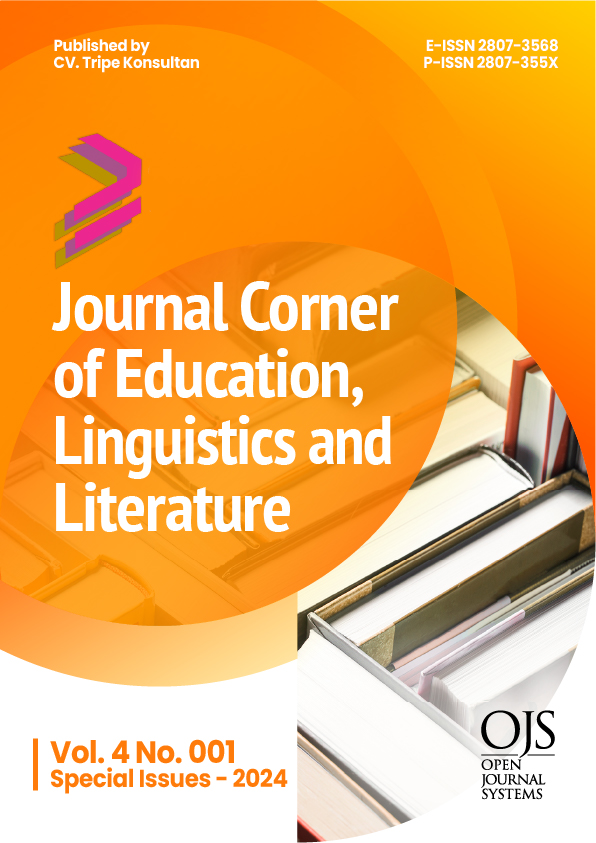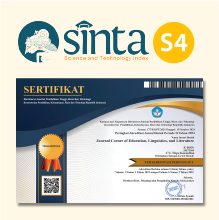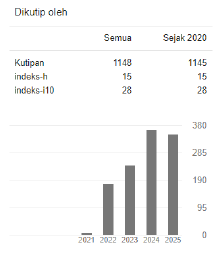Expanding the Market through Digitalization: Identification Tool for MSME’s to Their Potential Costumer
 https://doi.org/10.54012/jcell.v4i001.396
https://doi.org/10.54012/jcell.v4i001.396
 Abstract views: 96
Abstract views: 96
 PDF downloads: 77
PDF downloads: 77
Keywords:
digitalization, MSMEs,, market expansion, index construction, costumers identificationAbstract
This research aims to provide simple tools for MSMEs to understand the market conditions they are facing. Moreover, this research also intended to provide information for MSMEs on where customers can buy their products and their ability to access the digital marketing platform they will use. The expected users of these tools are MSMEs. Hence, the important aspect of constructing the tools highlighted in this research is simple, general, and inexpensive. Three key questions try to answer in this research are (1) where the customers are; (2) whether there are potential customers for MSMEs; and (3) do they have the ability to access the digital marketing platform that the MSMEs will try to use in this pandemic. This research proposes two types of indicators for targeted digital marketing. The first indicator is the regional indicator, which shows the capacity of the regions to spend or consume. The second indicator is a household indicator that shows the purchasing ability to consume and the ability of a household to access a digital platform. The data is estimated at the provincial level using annual data obtained from Statistics Indonesia. The results show that the provinces in Java currently have the highest potential for accessing digital platforms. However, analyzing the data using the growth variables shows a big potential for provinces in Kalimantan and Sulawesi as the next destination for expanding the digital platform.
Downloads
References
Accenture, Powering SMB Resiliency in a COVID-19 World, 2021
Arsyad, L. 2010. Ekonomi Pembangunan. UPP STIM YKPN, Yogyakarta.
Cooper, R. D. dan Schindler, P. S., 2011, Business Research Methods, McGraw.Hill, New York.
Gujarati, D., 2004, Basic Econometrics, 4th Edition, McGraw-Hill.
Katti, S.W.B., Pratiwi, D., dan Setiahadi, R. 2019. “Klassen Typology Approach for Analysis of the Role of Competitiveness Agricultural Sector,” IOP Conf. Ser.: Earth Environ. Sci. 347 012106
Kuncoro, M., 2011, Metode Kuantitatif: Teori dan Aplikasi untuk Bisnis dan Ekonomi, Edisi 4, UPP-STIM YKPM, Yogyakarta.
LPEM FEB UI, MSMEs Survive, Grow, and Thrive During the Pandemic Through Digital Adoption, 2020
Otoritas Jasa Keuangan, Bagaimana UMKM dan Perbankan Dapat Sukses di Era Disrupsi Ekonomi dan Digital, Join Research OJK-BCG, 2020
Raeskyesa, D.G.S., Suryandaru, R.A., Kadarusman, Y.B. 2019. Analysis on Growth Pattern and Economic Sectors in Bali Province, “Jurnal Ilmu Manajemen dan Ekonomika,Vol.11, No.2, June 2019: 45-56.
Rahayu, E.S. 2010. “Aplikasi Tipologi Klassen Pada Strategi Pengembangan Sub Sektor Pertanian Tanaman Pangan di Kabupaten Boyolali,” Journal of Rural and Development, Volume I, Nomor 2, Agustus.
Rahman, R. (2020). 37,000 SMEs hit by COVID-19 crisis as government prepares aid. The Jakarta Post. https://www.thejakartapost.com/news/2020/04/16/37000-smes-hit-by-covid-19- crisis-as-government-prepares-aid.html
Tallo, J, Amandus, et al. 2017. Typology Analysis and Leading Sector of East Nusa Tenggara Province in 2017. “Journal of Physics, Conf.Series 1114 (2018) 012122.
Wahyuningtyas, R., Rusgiyono, A., dan Wilandari, Y. 2013. “Analisis Sektor Unggulan Menggunakan Data PDRB,” Jurnal Gaussian, Volume 2 Nomor 3, hal 219 – 228.
Data source:
www.bps.go.id
https://www.bps.go.id/subject/2/komunikasi.html#subjekViewTab1)
Downloads
Published
How to Cite
Issue
Section
License
Copyright (c) 2024 Silvi Hafianti, Niluh Widyaningsih, Triana Apriani

This work is licensed under a Creative Commons Attribution-ShareAlike 4.0 International License.
All articles published in the Journal Corner of Education, Linguistics, and Literature are licensed under the Creative Commons Attribution-ShareAlike License (CC BY-SA).

















